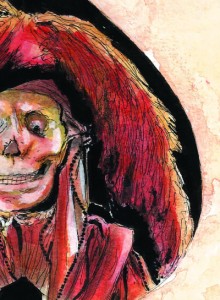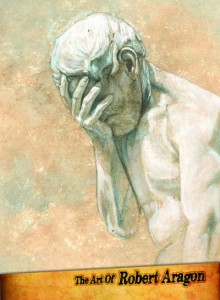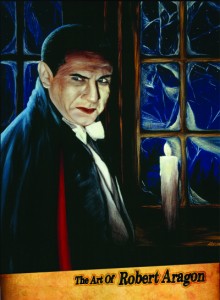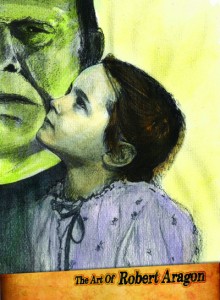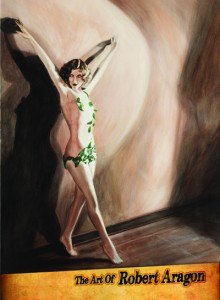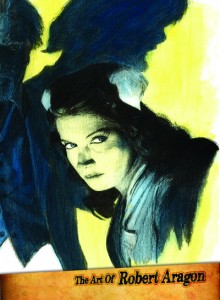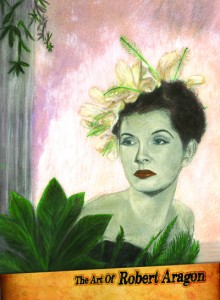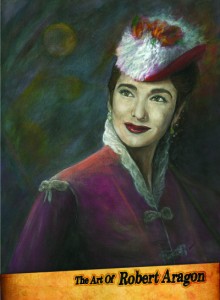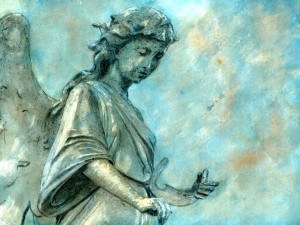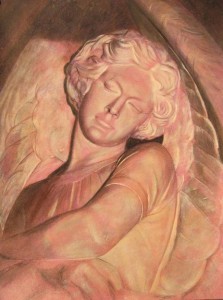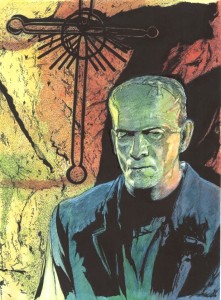**Interview conducted in April, 2012**
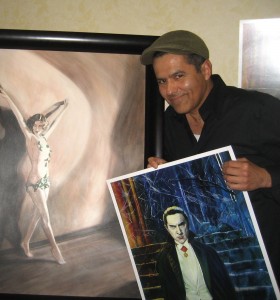
Robert Aragon learned to hold a pencil at age two and by five he had developed an exceptional pencil technique that soon flowed into painting by age seven. A self-taught artist, Aragon was born in 1968, a descendant of Ferdinand II of Aragon. He specializes in capturing the human experience on canvas. His passion for shadows and subtle shades of light and color emits a secret world inhabited by each of his subjects. Whether child or adult, Aragon is enraptured with the secretive innocence behind every person, often overlooked in this time of excessiveness. He is currently one of the leading fine art portrait artists in the world. His award winning art has exhibited internationally and is represented and protected by the very prestigious Bridgeman Art Library.
One of his admirers was the late Vincent Price, whose friendship and guidance was both a personal and artistic inspiration to him. Aside from portraiture, his passion for classic horror and science fiction has lead him to a career spanning projects such as cover artwork for the Monstrous Movie Music label, trading cards, children’s books, graphic novels and everything in between.
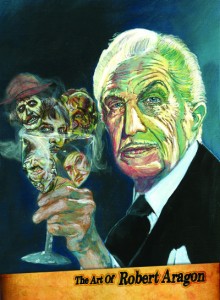 He has created works for Famous Monsters of Filmland, Karloff Enterprises, Universal Studios, Lugosi Enterprises, Ray Harryhausen, Warner Bros Studios, The Steve Mcqueen Estate, Bette Davis, Sammy Davis Jr. and Vincent Price and others.
He has created works for Famous Monsters of Filmland, Karloff Enterprises, Universal Studios, Lugosi Enterprises, Ray Harryhausen, Warner Bros Studios, The Steve Mcqueen Estate, Bette Davis, Sammy Davis Jr. and Vincent Price and others.
An avid world traveler, fluent in four languages, he has immersed himself in each culture he has come into contact with, learning from each a new method of capturing the human spirit. He has worked as a free-lance artist for the music and film industry for over a decade, creating works for such notables as. His work has been exhibited internationally and he was featured in Who’s Who in America as a young adult. A poet, philosopher and self-taught musician, he also enjoys surfing the breaks of San Diego as well as playing classical piano, collecting art and film memorabilia. (Bio provided by the artist)
I am a fine art painter specializing in the human form. I also work in the entertainment & toy industry. I’m also a writer for various magazines. Lastly, you’ll find me at my piano. So what type of art do I do? All sorts! If one is truly an artist, every nuance of life, every minuet moment offers an opportunity to express one’s creative being.
What are your artistic influences?
I’ve never been easily influenced, let alone artistically. I was born with a definite plan. I began drawing at age two, having been taught by my mother on how to appropriately hold a pencil.
I attempted to sketch her likeness when I was 4 years of age. There definitely was an innocent quality about my mother, a purity untainted by a life full of abuse & neglect. That one singular attempt in capturing her innocence on paper, while yet a child, was the most influential of all. Regardless of the subject matter, you’ll find an element of innocence in all my fine art work. Perhaps, in all my work. I’m not sure of that yet. Recently, during a world tour, my fine art paintings had been compared to those of Rembrandt. Although, flattering, he was not an influence. In fact, the truth behind my use of darkness and shadows in my work are due to having suffered a stroke at age 33. On my birthday nonetheless! My right eye is partially blind and paralyzed. I struggled over a year in relearning how to use and control my painting hand. Not to mention, how to see with only one good eye. After suffering the stroke, there definitely was a visual change in my work. Prior to the stroke, I had painted only one piece. A sun-drenched portrait titled “Dominic”. After the stroke, the paintings were full of foreboding darkness and outstretching shadows. But, always the subject’s life force (purity) and strength radiates forth beyond the darkness. Needless to say, my experiences have influenced my work. A blind paralyzed eye does not stop me from creating; it actually added a deeper layer of emotion disguised in dark hues.
Was literature a factor as an artist?
Oh, most definitely. Literature, good literature, like good music, creates emotional rhythms or themes within use. Which in turn, one may bring forth when approaching a canvas.
What draws you to do horror inspired art work?
The brevity of life draws me towards horror, but it equally draws me towards beauty as well. Here are 3 events which certainly exposed me to the “horrors” of life.
During child labor, my mother, Mary Schiaffino, went into cardiac arrest and died prior to my birth. I was literally “yanked” into this world with death facing my mother and I. She was brought back to life after being pronounced dead. Secondly, a metaphysical and spiritual bond was created with my mother and I. Thirdly, a desperate abusive solitude during my adolescent schooling years. These three emotional events introduced the world of the invisible, darkness and death to me. Although, I create some “dark” work, I’m sure it is not devoid of hope and light.
I have three of your Lon Chaney pieces (the phantom, hunchback, and the LAM vampire), do the classic works of literature on which those classic films were based on, have any influence on your work?
Those pieces were created for and licensed by the Chaney estate, so, I had to pay certain attention and detail true to the Universal Pictures interpretation of the Gothic literary characters. But, perhaps, subconsciously, the words of Victor Hugo and Gaston Leroux did have an influence in my style and approach. I have read the original novels several times.
Do you have an artistic routine?
Not that I’m cognitive of, no. I am always in a perpetual state of creative “flight”. Truly! I’m always singing, playing piano or visualizing. I’m always making short films, writing or at the canvas. I’m always thinking of the next creative work between all of that. If it was necessary to claim a routine, I think it would be safe to say, prior to approaching my work; one must remove any emotional limitation. Creativity should be sans fear or self-doubt. I am always nervous when I’m approaching a new piece, but, the moment I begin, the fear vanishes and creative instinct takes over.
You mentioned that the stroke has affected the way you create. Can you elaborate on that? Has your work shifted in subject matter or just gradient shading?
My work seems to have benefited from an emotional vocabulary which can only be developed from great challenges, strife or loss. I am still “suffering” with the effects of the stroke. It’s literally difficult, or at times, painful for me to work. I struggle intensely with each piece, whether at the piano or canvas. Somehow, the work created is imbued with an emotional intensity or sensitivity which parallels the difficulties. There is also the shadows found in most of my fine art work. There is no doubt to it; they are a direct result of my partially blind eye. As for the subject matter changing? Not at all. I was a lover of life and all its guises prior to my stroke and I still am. Albeit, a wee bit too emotionally raw, but it works for me. I think.
Thank you for your time!
Robert’s artwork can be viewed here as well as ordering print information.
